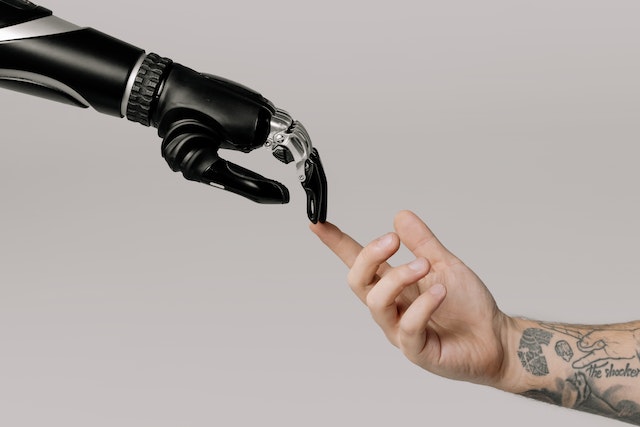Productivity in both life and business is crucial to success, and as technology continues to evolve, it’s becoming easier to streamline processes and maximize efficiency. One technology that has been making waves in the business world is artificial intelligence (AI). AI can be used in a variety of ways to improve productivity, particularly in the areas of sales and marketing. In this blog post, we will explore the different ways you can use AI in your business for sales and marketing, including research, design, administration, and communication.
- Marketing Research
Market research is a critical component of any successful marketing campaign. AI can be used to streamline this process by automating data collection and analysis. By using AI-powered tools, you can gather information on your target audience, including their interests, buying behaviors, and demographics. This data can then be used to create more personalized marketing campaigns, resulting in better engagement and conversion rates.
One example of AI-powered marketing research is IBM Watson Analytics. This tool can analyze large amounts of data and provide insights into customer behavior, trends, and preferences. It can also identify opportunities for growth and suggest strategies for improving your marketing campaigns.
- Design
Design is another area where AI can help improve productivity. AI-powered design tools can automate many tasks, such as creating logos, graphics, and even entire websites. This can save businesses time and money by reducing the need for manual design work.
One popular AI-powered design tool is Canva. Canva is a user-friendly design platform that allows businesses to create professional-looking graphics and designs quickly. It features a drag-and-drop interface and a vast library of templates, making it easy to create stunning designs without any design experience.
- Administration
Admin tasks can take up a significant amount of time in any business. AI can help automate many of these tasks, freeing up time for more essential tasks. For example, AI-powered tools can automate email management, appointment scheduling, and even accounting.
One example of an AI-powered admin tool is x.ai. This tool uses natural language processing (NLP) to schedule appointments for businesses automatically. Users can simply cc the x.ai assistant on an email, and it will take care of the rest, finding a time that works for everyone and sending out calendar invites.
Agencies such as Inboundthings.com use AI to integrate with productivity softare such as Notion. According to Jonny Cameron from Inbound Things
AI allows us to categorise tasks and information from strategic plan through to outline tasks and the progress of tasks for clients
- Communication
Effective communication is crucial in any business. AI-powered communication tools can help improve productivity by automating communication tasks and improving communication quality. For example, chatbots can be used to provide customer support 24/7, while NLP-powered email tools can help improve email communication by analyzing tone and providing suggestions for improvement.
One example of an AI-powered communication tool is Grammarly. Grammarly uses NLP to analyze written communication and provide suggestions for improving grammar, spelling, and tone. This can help businesses ensure that their written communication is clear, professional, and effective.
AI has the potential to revolutionize the way businesses operate, particularly in the areas of sales and marketing. By using AI-powered tools for research, design, administration, and communication, businesses can improve productivity, save time and money, and create more effective marketing campaigns. While AI is still in its early stages, it’s clear that it has the potential to be a game-changer for businesses of all sizes. As AI technology continues to evolve, we can expect to see more innovative AI-powered tools that help businesses operate more efficiently and effectively.
For more info on the ever changing world of AI – follow Zain Kahn on Twitter.

